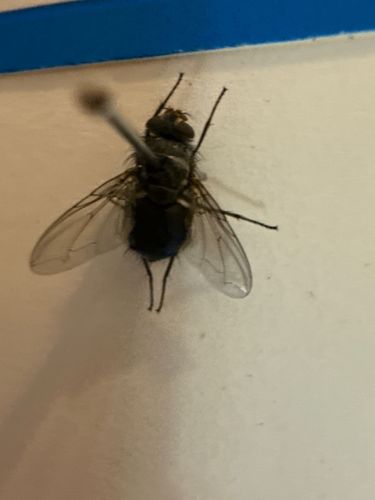House fly
Scientific Name: Musca domestica
Order & Family: Diptera, Muscidae
Size: 6-7 mm (0.24-0.28 inches)

Natural Habitat
Globally distributed, often found in close association with humans and domestic animals, particularly in areas with decaying organic matter and waste.
Diet & Feeding
Opportunistic feeders, consuming a wide range of decaying organic matter, feces, garbage, sweat, spilled food, and sweet substances. They regurgitate digestive fluids onto solid food to liquefy it before ingesting.
Behavior Patterns
Adult house flies are active during the day, resting at night. They are highly mobile, flying between food sources and resting sites. Females lay hundreds of eggs on decaying organic matter, which hatch into maggots. The maggots feed and then pupate, eventually emerging as adult flies. The entire life cycle can be completed in as little as 7-10 days under optimal conditions.
Risks & Benefits
Risks: House flies are significant vectors of disease, carrying and transmitting pathogens (bacteria, viruses, parasites) that cause various human and animal illnesses, including typhoid fever, cholera, dysentery, salmonellosis, and tuberculosis. They contaminate food and surfaces with these pathogens through their bodies, legs, and feces. Benefits: While mainly considered a pest, house flies contribute to the decomposition of organic matter in some ecosystems, serving as a food source for some predators and parasites.
Identified on: 10/18/2025